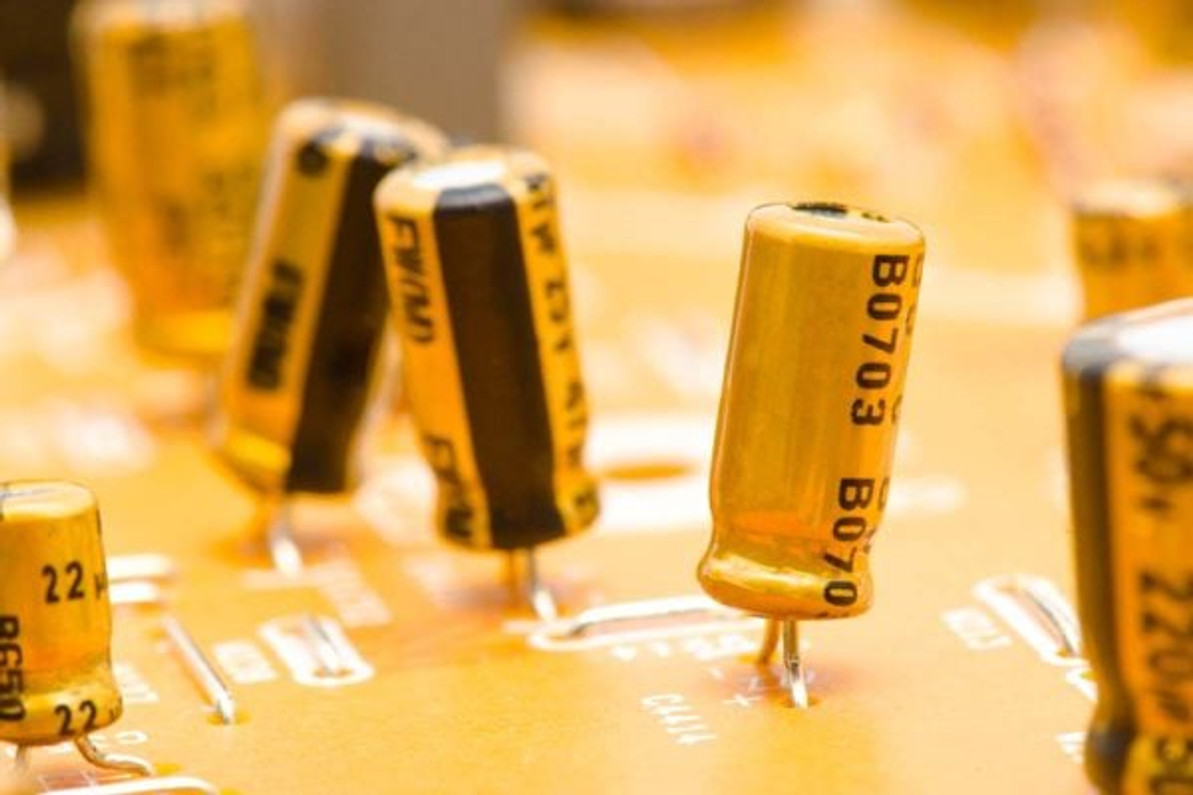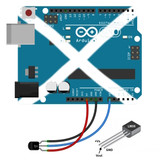What is a capacitor? How does a capacitor work? What does a capacitor do?
What is capacitance?
Honestly I’m asking myself that too, so let’s try another way of thinking about it.
Let us start out with an analogy: you might know that capacitors are like batteries. In some ways this is a fair analogy, they both store energy, can be charged and discharged. However this is where the similarities end. A battery stores energy in chemical form, charges and releases energy slowly, and can store a lot of energy. Whereas a capacitor stores energy in electrostatic (whatever that means) form, charges and discharges very quickly and can’t store very much energy, even if it’s a super capacitor, they store many times less energy.

Pictured above: 10 Farad super capacitor
So what is a capacitor?

Pictured above:Early water-filled Leyden jar, consisting of a bottle with a metal spike through its stopper to make contact with the water
A capacitor is any two electrical conductors separated by an insulator (also called a dielectric). First discovered in 1745 Ewald Georg von Kleist and Pieter van Musschenbroek (independently) find that a glass jar with foil inside can be charged with an electrostatic generator and when your hand is placed on the jar. and discharged when you touch the top of the jar. It gave a shock powerful enough that Pieter “would not take a second shock for the kingdom of France.” These jars were given the name Leyden jar after the town Leyden were Pieter resided. The capacitor was made using the user’s hand and foil as conductors and the glass as an insulator.
Normal everyday capacitors have advanced from the Leyden jars of old. You get ceramic, paper, foil, air, glass, and polyester capacitors these are all called simple capacitors: both ends of these capacitors are similar, there is no polarity to them. You also get electrolytic capacitors, these are polarised, meaning they will be destroyed if they are connected the wrong way around.
There are two standard capacitor symbols for use in circuits:

with version 2 showing how to indicate a polarised capacitor.

Some foil capacitors are created by having two metal foils sandwiched between a waxed paper.
How does a capacitor work?

When power is applied to a capacitor, electrons will start to move away from one end of the capacitor and towards the other. This will cause a negative charge will build up on one end and an equally sized positive charge will build up on the other end, until the power provided can no longer overcome the repulsive force of the electrons on the negative end of the capacitor. Once a capacitor is connected in the opposite way it was charged it will discharge its stored electrons.
For the picture on the left:
1. Discharged capacitor. Equal amount of positive and negative charges on both ends of the capacitor.
2. Charging capacitor. Electrons from one end of the capacitor are moving to the other end.
3.Fully Charged capacitor. All the negative electrons on one end, creating a negative charge, and leftover protons creating the positive charge on the other end.
4. Discharging capacitor. Only the extra electrons moving back to the positive end.
When the capacitor is charged it has what’s called electrostatic energy. This is a form of potential energy. What is potential energy? It’s any energy that is stored, and could be changed into another type of energy. A ball at the top of a ramp has a gravitational potential energy, if you push it it’ll start to roll and turn all the potential energy into kinetic (moving) energy.
For the picture on the right:
1. Ball at rest with gravitational potential energy.
2. Ball rolling down hill turning its gravitational potential energy into kinetic (moving) energy.

What is capacitance?
Capacitance is the measure of how much electric charge (energy) a capacitor can hold at a certain voltage. This is expressed in the equation to the right:
C = Capacitance measured in Farads (F)
Q = Charge measured in Coulombs (C)
V = Voltage measured in Volts (V)
Capacitance is affected by three main factors: distance between the two conductors, surface area of overlap between the two conductors and the permittivity of the insulator. This can be shown in the equation:
C = Capacitance measured in Farads (F)
ε = Absolute permittivity of the dielectric (Fm‾¹)
A = Area of overlap between plates in Metres squared (m²)
d = Distance between plates in Metres (m)



Permittivity is how much the molecules in an insulator align themselves with an external electric field. Some molecules will have a slight polarity due to atomic chemistry black magic. When an external electric field is applied to an insulator, these polarised molecules line themselves up against the electric field. This stores energy. The higher the permittivity the more energy it can store.
What does a capacitor do?
Capacitor’s can be used for very many basic purposes to the point that you’ll struggle to find any circuits without a capacitor in them somewhere. Since they store energy one of the very basic uses is as a bypass capacitor; this is where a capacitor is placed in line with a microcontroller because sometimes voltage might drop for a split second and if this were to happen the microcontroller would restart. You wouldn’t want that so the capacitor acts as a backup power-source for that brief split second.
Another aspect of capacitors is that they take a predictable amount of time to charge and discharge therefore they can be useful in timing circuits.

Pictured above: camera capacitor
In AC (Alternating Current) circuits, capacitors can be used to only allow certain frequencies out, useful for speakers and old timey radios, they can also be used to stop DC current and only allow AC current through as a capacitor stops the flow of electrons once fully charged (and that’s what would happen with a DC current).
Obviously storing charge can be used to dump a whole lot of power at once, like in a flash camera, or in a high power pulse laser.

Recent Posts
-
What is Ohm's Law?
Are you curious about how electricity works? Let me introduce you to a very important concept i …9th Mar 2023 -
How do I control a central heating system using an Arduino
To control a heating system using an Arduino, you will need to write a sketch (program) that impleme …7th Feb 2023 -
The Versatility of Slotted Aluminium Extrusions: From Robotics to Camper Van Renovations
In today's ever-evolving world, the need for versatile and adaptable building materials is greater t …25th Jan 2023




